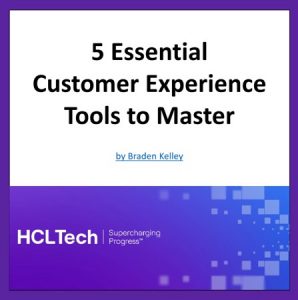
GUEST POST from Robyn Bolton
Most customer research efforts waste time and money because they don’t produce insights that fuel innovation. Well-meaning business people say they want to “learn what customers want,” yet they ask questions better suited to confirming their own ideas or settling internal debates. Meanwhile, eager consumers dutifully provide answers despite the nagging belief that they’re being asked the wrong questions.
It doesn’t have to be this way. In fact, you can get profound revelations into consumers’ psyche, motivations, and behaviors if you do one thing – channel your inner Elmo.
First, a confession
I find Elmo deeply annoying. I grew up watching Sesame Street, and I still get an astounding amount of joy watching Big Bird, Mr. Snuffleupagus, Cookie Monster, Bert and Ernie, Grover, and Oscar the Grouch (especially when Oscar channels his inner Taylor Swift).
Elmo moved to Sesame Street in 1985, and it hasn’t been the same since. He’s designed to reflect the mental, emotional, and intellectual capabilities of a 3.5-year-old, and, in that aspect, his creators were wildly successful. I fully acknowledge that Elmo plays a vital role in the mission of Sesame Street and that people of all ages love Elmo. But Elmo makes my ears bleed, and I will never be ok with the fact that Elmo refers to himself in the third person.
This is why my recommendation to channel your inner Elmo is shocking and extremely serious.
Next, an explanation
On Monday, Elmo posted on X (yes, the minimum age limit is 13, but his mom and dad help him run the account, so it’s apparently okay), “Elmo is just checking in! How is everybody doing?”
180 million views, 120,000 likes, and 13,000 comments later, it was clear that no one was okay.
And lest you think this was Gen Z trauma dumping on their ol’ pal Elmo, Dionne Warwick, T-Pain, and Today Show anchor Craig Melvin responded with their struggles. Comments ranged from, “Mondays are hard” to “Elmo I’m gonna be real I am at my f—ing limit,’ to “Elmo each day the abyss we stare into grows a unique horror. one that was previously unfathomable in nature. our inevitable doom which once accelerated in years, or months, now accelerates in hours, even minutes. however I did have a good grapefruit earlier, thank you for asking.”
Wow. Thank goodness for that grapefruit.
There are a lot of theories about why Elmo’s post touched a nerve – it’s January and we’re tired, it’s easier to share our struggles online than in person, or we still enjoy “that wholesome and sincere bond from childhood that makes us want to share.”
I’m sure all those are true, and I think it’s something more, something we can all learn and do.
Now, the secret
Elmo may be a red, hairy, 3.5-year-old muppet. Still, he nailed the behaviors required to get people to open up and share their inner worlds – the very thoughts, beliefs, and motivations that enable others to create and offer impactful and innovative solutions.
Here’s what Elmo did (and you should, too):
- Show that you’re genuinely curious: Elmo didn’t open with the standard “How are you?” that if answered with anything other than the socially acceptable “Fine,” results in awkward silence and inner panic. Elmo opened by declaring his intent – checking in – and then asked a question. Because of that, we understood his motivation was genuine, and he wanted an honest answer.
- Ask open-ended questions: Elmo didn’t ask a closed question that can be answered with yes or no. He asked a question that allowed people to share as much or as little as they wanted and that could act as a springboard to a deeper conversation.
- Listen silently and without judgment: Elmo didn’t follow up his original tweet with options like “Are you doing ok, or not ok, or are you happy, or sad, or mad, or…” Elmo asked a question and then listened (read the responses) without jumping back into the conversation or firing off follow-up questions.
- Acknowledge and thank the person sharing: On Tuesday, Elmo responded but not by skipping off to the next scheduled post. He acknowledged the response by opening with, “Wow! Elmo is glad he asked!” He didn’t share his opinion or immediately ask another question. Instead, he thanked people for sharing, acknowledged that he heard their responses, and was grateful.
- Do something with what was shared: Even if you do #4, it’s tempting to move on to the next question. Don’t. Elmo didn’t. Instead, he wrote that he “learned that it is important to ask a friend how they are doing.” He also wrote that he “will check in again soon, friends! Elmo loves you.” You don’t have to profess your love but do respond with what you learned and what it makes you wonder.
People can’t tell you what to create because they don’t know what you know. But they can tell you the problems they have. If you’re willing to listen (just don’t talk about yourself in the third person, you’re not a muppet).
Image credit: Dall-E via Bing
![]() Sign up here to join 17,000+ leaders getting Human-Centered Change & Innovation Weekly delivered to their inbox every week.
Sign up here to join 17,000+ leaders getting Human-Centered Change & Innovation Weekly delivered to their inbox every week.





